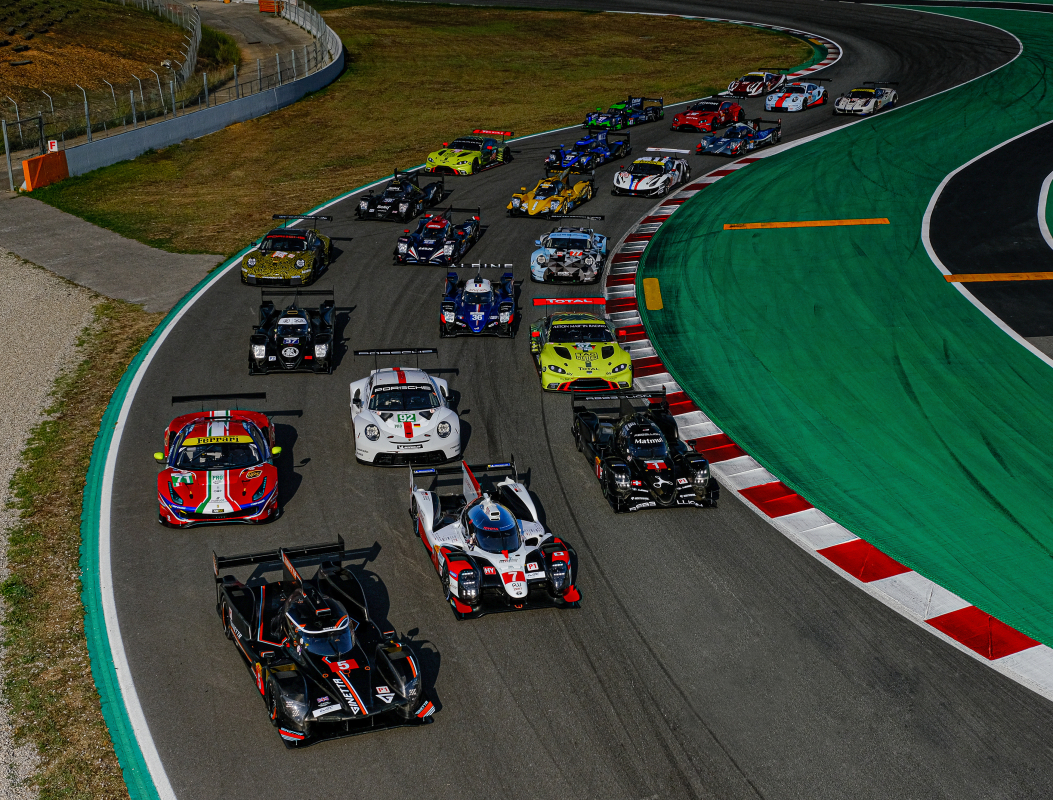
Ahead of FIA WEC Season 8, the Technical Delegates of the FIA and ACO have issued the below technical explanations regarding:

LMGTE Pro Balance of Performance (BOP), the Success Ballast system to be used in LMGTE Am, and details about the Equivalence of Technology (EOT) and Success Handicap system for LMP1 entries. Following is a review of the different principles, now automatic and linked to results, which are intended to create tighter competition in the different categories.
LMP1: EOT and Success Handicap
The prototypes entered in LMP1 by both manufacturers and private teams use different technologies, hybrid or non-hybrid, with different power units – normally aspirated or turbo-charged. In order to allow competition between these different technologies, an Equivalence of Technology (EOT) has been established since the beginning of the 2018-2019 season. It is, in fact, made up of two equivalences of technologies: the equivalence between hybrid and non-hybrid cars, then the equivalence between non-hybrid cars using either normally aspirated or turbo-charged engines.
The Success Handicap has been designed to apply to the entire championship except for the 24 Hours of Le Mans and will be applied to individual cars and not to different types of prototypes.
The success handicap represents a slowing in lap time of a car at the next round of the Championship, based on points scored in the overall classification for each race. A ranking by car allows the establishment of a hierarchy which will determine the handicap allocated car by car (the points scale of the championship will be used).
For example:
Race 1
Car A wins and scores 25 points
Car B scores 15 points
Car C scores 0 points and is in last place in the results
At the end of race 1, each car will be slowed per lap by 0.008s per kilometre (so X length of the next race circuit,) for each point of difference between them and the last-placed car in the overall classification.
For example, if the next race’s circuit is 5 km in length, the result obtained for cars A, B and C will be:
For race 2, car A will be slowed by 1 second (0.008 X5 X25)
For race 2, car B will be slowed by 0.6 seconds (0.008 X5 X15)
For race 2, car C is not adjusted
The mechanism will then be repeated throughout the championship, with the exception of the 24 Hours of Le Mans.
This Success Handicap will be limited and regulated for the season. The handicap may be the result of ballast, or a modification to the power output. It is not just ballast, which is why it’s known as a Success Handicap and not Success Ballast.
This levelling of the field will be done according to the race results and not according to the performance of a car in the race (lap times will not be taken into account, only points scored). This will allow the potential for different winners.
Balance of Performance: LMGTE Pro
The cars competing in GTE are based on production models and are fundamentally different from each other. To create a more level playing field for competition, regulators have a system which can apply fine adjustments in the performance of individual cars to allow each model to be competitive – BOP or Balance of Performance.
The automated BOP system introduced at the beginning of the 2017 season will continue to be used for all WEC rounds except the 24 Hours of Le Mans. This takes into account evaluation criteria defined and agreed by competitors and regulators.
For the first round of Season 8, the 4 Hours of Silverstone, the initial automatic BOP will be based on the results from the TOTAL 6 Hours of Spa-Francorchamps which took place in May 2019. For the new Porsche 911 RSR-19, wind tunnel and engine test bench sessions served as the basis for the BOP calculation.
Success Ballast: LMGTE Am
The purpose of the introduction of Success Ballast in LMGTE Am is to equalise the performance between drivers and teams. This is a system which has been successfully used in the European Le Mans Series during 2019 and which has been agreed by all WEC LMGTE Am competitors.
The starting BOP for this category is established from the last iteration of the automatic BOP levels from the previous season.
The decision to award Success Ballast to a LMGTE Am entry will be based on:
1) Position in the championship
2) Classification in the last race
3) Classification in the race before last
For example, for Round 2 of Season 8 in Fuji, only two items will be used: Championship positions and the results from Silverstone. In Round 3 at Shanghai, the calculation will be based upon Championship positions in addition to the results from Silverstone and Fuji, while in Round 4 in Bahrain, the calculation will be made using the results from Fuji and Shanghai.
Ballast will be applied as additional weight in the car.